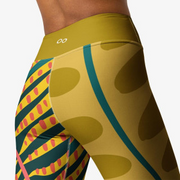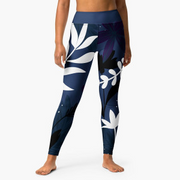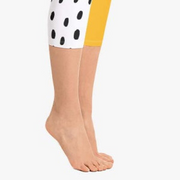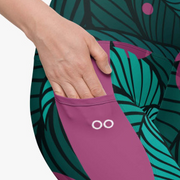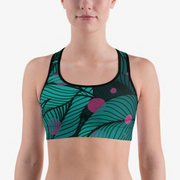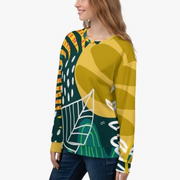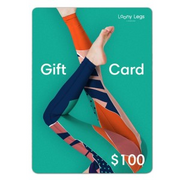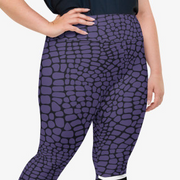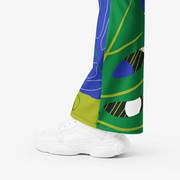Moisture-wicking fabrics and moisture absorption materials serve different purposes — even though they are basically two sides of the same coin.
It's inevitable that we'll all sweat a little whether we're in the gym, in a yoga class or it's just really hot outside! If you want to keep those pesky sweat marks at bay, it's essential for you to understand how they vary so you can pick fabrics that will keep you the most dry and comfy.
The best fabrics you can find typically have some degree of breathability and moisture-wicking capability, but you should understand how they differ so you don't make wrong assumptions. In this blog, we'll compare moisture absorbing fabrics and moisture wicking fabric and how effective they are for managing sweat!
What are moisture absorbing fabrics?
Fibres used to make clothing that absorbs moisture can hang onto and collect sweat.
Micropores, which are minuscule openings in the material, absorb water, which accounts for 99% of your perspiration, preventing it from evaporating. In essence, these micropores stop perspiration from seeping through to your clothing's other layers.
For instance, a shirt that absorbs perspiration will catch the sweat before it gets to the shirt, keeping you drier and preventing sweat stains on your clothing. People wear cotton because it is one of the best fabrics for absorbing moisture, which helps avoid sweat stains.
Despite the fact that the words are occasionally used interchangeably, moisture-wicking fabrics work differently than fabrics that absorb moisture.
What are moisture wicking fabrics?
Compared to textiles that absorb moisture, moisture wicking or sweat wicking fabrics function differently. Water droplets that are on the surface of moisture-wicking fabrics travel through the fabric until they are outside of it. When the droplets leave the container and come into contact with oxygen, they begin to evaporate.
This is accomplished through the capillary action process, in which molecular forces cause liquid droplets to be drawn through minute fissures in the fabric and rise to the top for evaporation.
Merino wool and polyester are some of the best moisture wicking fabrics, like our sweat wicking funky and colourful leggings! Particularly among outdoor enthusiasts and fitness enthusiasts, who value keeping dry in wet environments, they are widely used. For people who experience excessive sweating, clothing made of moisture-wicking materials is essential.

Moisture wicking material vs Moisture absorbing materials
Let's establish the similarity between moisture-wicking and moisture-absorbing fabrics: both are intended to keep you dry and stop perspiration stains on your clothing. The mechanisms of action they depend on to keep you dry and stain-free are what distinguish them from one another.
Simply explained, sweat is captured and held by fabrics that absorb moisture. While capturing perspiration, moisture-wicking fabrics go a step further. They push the perspiration to the fabric's surface where it can evaporate rather than holding onto it.
While the latter functions more like a water suction, the former functions more like a sponge.
Having said that, the variations in their functions result in various results for people who excessively sweat, so really if you're looking for your perfect leggings or sports bra, it's all about finding what works for you!
What are breathable fabrics?
Breathable fabrics are another term you may come across when trying to keep the sweat at bay.
A fabric that enables air to pass through it is, in essence, breathable. It is especially helpful in hot weather or whenever you are exercising, and it's usually a good quality to look for in active wear.
This function helps keep you cool by allowing warmth from your body to dissipate or by allowing cooler air to move in. As it turns out, the quantity of air that a fabric lets pass through it varies greatly, which can have an effect on your comfort and performance.
For performance reasons, outdoor clothing and footwear includes breathable fabrics and membranes so that users and athletes can engage in physical activities of any level while remaining at ease and safe.
Breathable microporous membranes are constructed from a thin, synthetic material with microscopic pores that are just big enough for perspiration to pass through and evaporate on the surface of the garment, but not small enough to let water droplets (rain, snow, etc.) pass through.
The 3 main differences between moisture absorbing and moisture wicking
- Moisture absorbing fabrics will collect sweat more quickly and visibly reduce sweat patches whereas wicking fabrics are treated using specialist solutions that help the fibre absorb less moisture, essentially repelling it away from the body.
- Compared to fabrics that absorb sweat, wicking fabrics promote airflow and keep you feeling cooler because they help sweat leave your body more quickly, preventing that clammy feeling.
- When worn, wicking fabric feels lighter than moisture-absorbent fabric, keeping you more comfortable all day, particularly if you're active.
Looking For Top-Quality, Breathable Workout Leggings and Sports Bras?
Moisture-wicking fabrics should be your first option if you're looking for quick-drying protection. You can feel and look drier more quickly than with moisture-absorbing fabrics thanks to the fact that they draw perspiration out of your clothing.
In addition to feeling like a second skin, Loony Legs' leggings are made of irresistibly soft microfibre yarn, which is 82% polyester and 18% spandex and is sweat-wicking, breathable, and quick-drying. No matter how long you work out, our high-waisted leggings will remain in place so you can fully concentrate on feeling good and looking good!
Our goal is to design a one-of-a-kind item for every girl, which is why we provide a selection of sizes from 2XS to 6XL as well as a range of vibrant hues, patterns, and designs.
Shop now to avoid missing out on our innovative, long-lasting selection.
Check out our high-quality collection of funky workout leggings and sports bras today!
Moisture absorbing vs moisture wicking FAQs
What is the difference between wicking and absorption?
In short, wicking is more about spreading the liquid than absorbency is about the substance absorbing the liquid. Wicking and absorption are two separate terms.
Does moisture wicking keep you dry?
You won't have to be concerned about sweat stains or wetness showing through your apparel thanks to moisture-wicking materials. These materials draw perspiration away from your skin so that it doesn't seep into your clothes and can rapidly evaporate, keeping you dry and feeling good.
Is all polyester moisture-wicking?
One of the best-performing fabrics for wicking away perspiration is a synthetic blend of polyester and spandex. To produce athletic wear that is light, breathable, and moisture-wicking, polyester should, however, be combined with other fabrics for the best results.

